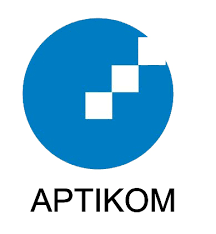Making Requirements for Karanglo Asri Waste Bank Using the User-Centered-Design Method
DOI:
https://doi.org/10.18196/eist.v2i2.16862Keywords:
requirement gathering, waste bank, design, user centered design, unified modeling languageAbstract
Since 2017, the Karanglo Asri Waste Bank has been operating with three core managers, including the chairman, secretary, and treasurer, as well as 32 active customers. Residents have been educated on identifying waste that can be resold to collectors or transformed into fertilizers and handicrafts using a waste bank maintained by a local government agency. The staff of the waste bank has continued to write by hand, and each has his or her notebook. Nonetheless, administrative books include hurdles—for instance, errors in recording, destruction, loss, improper computations, and unstructured records. Therefore, the customers must resolve these issues by matching the terms and criteria. The User-Centered-Design method included three phases for determining the requirements of the Karanglo Asri Waste Bank. They generated four user journey maps, four use case diagrams, six activity diagrams, and eighty-four user stories. It was completed for testing by the managers and customers based on requirements derived from the needs of the Karanglo Asri Waste Bank’s staff and customers.
References
egsaugm. 2019. “Sejauh Manakah Inovasi Pengelolaan Sampah Di Indonesia?”
Han. 2018. “Unified Modeling Language.”
Hanifah, Nur, and Zaenal Abidin. “Strategi Pengembangan Pendidikan Lingkungan
Pada Masyarakat Desa Sukawening, Kabupaten Bogor.” 2: 11.
Hayati, Rina. 2019. “Jenis-Jenis Wawancara.”
Marali, Meilisa Dwiyati, Fajar Pradana, and Bayu Priyambadha. “Pengembangan Sistem Aplikasi Transaksi Bank Sampah Online Berbasis Web (Studi Kasus : Bank Sampah Malang).” : 7
Musrifah, Ai, and Ega Mutia. 2017. “Pembuatan Aplikasi Pengelolaan Proposal Di Unit Kegiatan Pengelola (Upk) Kecamatan Mande Berbasis Desktop.” : 9
Setyoningrum, Ary, and Paulus Insap Santosa. “Analisis Kebutuhan Sistem Informasi Arsip Bangunan Berbasis User Centered Design (UCD).” . ISSN: 11.
Tanudjaja. 2018. “Seberapa Penting User Journey Map Dalam Penelitian?”
Ulty. 2020. Cara Membuat User Requirement.
Utami, Marissa, Yovi Apridiansyah, and Erwin Dwika Putra Putra. 2021. “Perancangan E-Skripsi Universitas Muhammadiyah Bengkulu Menggunakan User Centered Design (UCD).” INTECOMS: Journal of Information Technology and Computer Science 4(1): 115–19.



